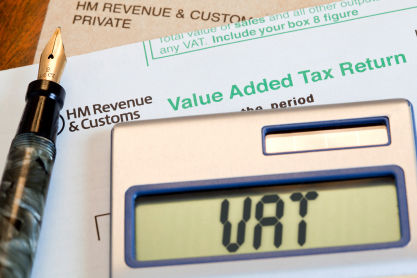If your business is VAT registered then it is vital that you charge the correct rate of VAT to your customer to ensure that you file the relevant information with HMRC. There are different rules based on whether you are selling goods or services, selling to businesses or individuals and selling to the UK, EU or the rest of the world.
Consumers or Businesses
The first stage is to decide whether you are selling to consumers or businesses. For EU VAT purposes this depends on whether they are VAT registered or not. If they have a VAT number they are classed as a business and if they don’t have a VAT number they are classed as a consumer. So a business that isn’t VAT registered is counted as a consumer.
Goods or Services
When you trade outside the UK it is important to determine whether the sale is for goods (a physical item that moves from place to place) or services as the sale falls within the scope of the UK VAT rules based on the place of supply.
Goods that are supplied from the UK fall under the UK VAT rules where the seller is based.
Services are assumed to be provided where the customer is based and so fall under the VAT rules in that country.
Sales to EU Consumers
Sales to non VAT registered consumers are treated like a sale to a UK customer with 20% VAT added to the net amount as normal. However if you have a high value of these types of distance sales then you may need to register for VAT in the EU country and charge the relevant VAT. If your EU sales are over £250k per year then you also need to file an Intrastat Supplementary Declaration.
Digital Service Sales to EU Consumer
The sale of digital services to non VAT registered customers in the EU fall under the VAT MOSS rules (discussed in another post here).
Sales to EU Business
The customer’s VAT number and your VAT number should be shown on your sales invoice to be classed as a business sale. At monthly or quarterly intervals an EC Sales List should be filed to declare any sales to EU businesses.
Goods to EU Business
Goods that are sold to a VAT registered business in the EU can be zero rated (Zero Rated EC Goods Income in Xero). This will include the sale on your EC Sales List within Xero and include the sale in Boxes 6 and 8 of your VAT return.
Services to EU Businesses
If services are supplied to an EU business then the customer is responsible for charging VAT via the Reverse Charge Rules (basically as if they are selling the service to themselves). You just need to zero rate the goods (Zero Rated EC Services in Xero). Again this will include the sale on your EC Sales List within Xero, include the sale in box 6 but not in Box 8 (as the place of supply is with the customer).
Goods Exported Outside The EU
VAT is not charged if goods are exported outside the EU provided you keep evidence of the export. They should be marked as No VAT in Xero.
Services to Non EU Businesses
Services supplied to a business outside the EU are outside the scope of UK VAT and should be marked as No VAT in Xero.
Conclusion
Sale to consumer (EU or non EU) – Add 20% VAT. Not on EC Sales list.
Sale of Goods to EU business – Zero Rated EC Goods Income. EC sales section on
VAT return. Include on EC Sales list.
Sale of Services to EU business – Zero Rated EC Services. Not on EC sales
section. Include on EC Sales list.
Sale of Goods outside the EU – No VAT. Not on VAT Return. Not on EC Sales List.
Sale of Services to Non EU business – No VAT. Not on VAT Return. Not on EC Sales List.
Topics
Archive
- 2024
- March 2024 (1)
- January 2024 (1)
- 2023
- December 2023 (2)
- November 2023 (2)
- September 2023 (2)
- August 2023 (1)
- July 2023 (3)
- June 2023 (3)
- May 2023 (2)
- April 2023 (1)
- March 2023 (4)
- February 2023 (2)


Comments for Are you charging the correct VAT?